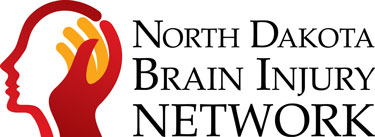Leslee Williams – I am a Brain Injury Survivor
This spotlight originally appeared in the Summer 2021 newsletter.
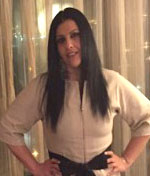 Leslee Williams reflects on what
she wished she had learned earlier in her brain injury journey.
Leslee Williams reflects on what
she wished she had learned earlier in her brain injury journey.
“I would say educate, educate, educate yourself. If you are able to read, listen to audio books, listen to everything, ask questions, and be your own advocate. Be very involved in your own care. Research pharmaceuticals and don't just be a people pleaser and agree with physicians. Get into proper psychotherapy with a therapist familiar with brain injury. They'll be able to listen and give you tools to move forward.”
Multiple Injuries
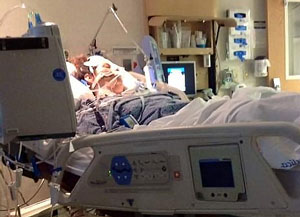 Leslee sustained her initial brain injury in
June of 2015 when she was 44 years old. Leslee's story of how she sustained her injury is more common than one
might think, but less talked about. She was engaged in intimacy when she endured a subdural hemorrhage. The
initial injury was not the last for Leslee. As many survivors know, once you've hand one brain injury, your
likelihood of having another increases significantly.
Leslee sustained her initial brain injury in
June of 2015 when she was 44 years old. Leslee's story of how she sustained her injury is more common than one
might think, but less talked about. She was engaged in intimacy when she endured a subdural hemorrhage. The
initial injury was not the last for Leslee. As many survivors know, once you've hand one brain injury, your
likelihood of having another increases significantly.
“I was also found to have three aneurysms. A radiologist coiled the fragile one. Fast forward six months, I had another angiogram of the brain, as he wanted to check his coiling and ensure the other two aneurysms hadn't grown. I had a cerebellar stroke in recovery and an occipital stroke hours later. The neurologist and team performed an emergency craniotomy, removing part of my cerebellum, as the blood had hemorrhaged onto the brain. I went in as Leslee, came out a stranger.”
Life Changes
Following her injury, Leslee endured many changes within her life. The two that affect her the most on a daily basis, are the loss of her closeness with family and almost constant dizziness. There have been some positive outcomes from her injury though as well.
“My life has changed drastically. I see the world through a completely different magnifier. There are people that can now play an instrument or speak a different language. I can feel people's energy. For example, I can feel if something is going on with someone or if a couple is in an argument. Either doesn't have to say a word to me. I'm not a savant and I can't see into the future. I'm just more connected with things, and see everything different.”
A New Purpose
Along with experiencing aura-type changes, Leslee has also begun to make it her mission to help others in similar situations she found herself in.
“After doing some research, I founded a nonprofit called There Is A Solution Inc. Our mission is to volunteer at hospitals and rehabilitation facilities offering survivors, family, and caregivers, insight (advice, assistance, guidance, help, and support) to move forward after brain injury. I share my story of courage, strength, and hope under Sacred Purpose. I send out proposals for grants and am volunteering at Sanford Health and Essentia Health to share my story with other brain injury survivors.”
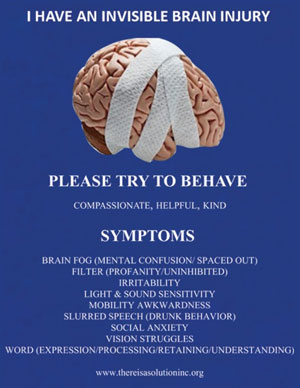 Leslee hopes that sharing her story will help others find
ways to cope and learn to advocate for themselves. There are many things about brain injury that are often not
highlighted as much and Leslee has experienced many of them.
Leslee hopes that sharing her story will help others find
ways to cope and learn to advocate for themselves. There are many things about brain injury that are often not
highlighted as much and Leslee has experienced many of them.
Awareness and Resources
“The lack of awareness and training among even medical professionals regarding brain injury is astounding,” she said.
One of Leslee's favorite quotes from her recent research, points out this fact. Uzma Samadani, MD, PhD, wrote in the 2019 November/December issue of The Brain Health Magazine.
“A lack of basic understanding in the medical field. Because brain injury has historically had very few objective measures, it is a difficult topic to teach in medical schools. Relatively few physicians specialize in the management of brain injury, and medical schools don't have many required lectures about brain injury, if any at all. Most doctors will graduate from medical school without ever having been involved in the care of a brain-injured patient. Unless they do residency in neurosurgery, there's no requirement to treat brain injury. Most pediatric, primary care, and neurology residents have no requirements for studying brain injury during their residency, yet these specialties see 80% of all people with brain injuries. Only 8% of pediatricians feel comfortable treating patients with complex post-concussion syndrome.”
North Dakota only has 20 residential treatment beds available for individuals with brain injury, and individuals often end up in nursing homes at an inappropriate age. Leslee sustained her injury while living in Las Vegas, Nevada, and also found herself in a nursing home, she believes mostly due to proximity to her family. She reflects on that experience as “Terrible, I was the youngest one, had to depend on family that didn't know about and weren't educated on brain injury.”
Family
Leslee felt she tried hard with her family.
“When I got out of the nursing home, they took a path of deep denial and wouldn't approach me because I was so different. As soon as my brain healed, I would send them articles to get educated, but they didn't read anything. They pretty much avoided me. My subconscious knew this behavior was wrong, so I ran away from that environment. I moved to Jamestown, North Dakota, as the managers of Nevada Community Enrichment Program (NCEP) have HUD properties they manage across the states. A property they manage in Jamestown had a unit available quickly. I was there for 10 months. Then I came to Fargo as there's much more life here.”
Coming to North Dakota has been refreshing for Leslee. Here she can be the new Leslee she has found after her injury.
Hope
 The new Leslee comes with its struggles.
She suffers from almost constant dizziness. She accredits much of her rehabilitation to NCEP.
The new Leslee comes with its struggles.
She suffers from almost constant dizziness. She accredits much of her rehabilitation to NCEP.
“There was speech therapy, physical therapy, occupational therapy, brain ed classes, memory classes, cooking classes (how to integrate back into society), massage, mental counseling, meditation, tai chi, and creative classes. I attended that program for three months.”
Now Leslee is back into therapy after five years. She is currently doing physical and vision therapy. These sessions are helping a lot with balance, and dizziness, which seem to be coming from her eyes. She was thrilled to find out her physical therapist at Apex in Fargo is a Certified Brain Injury Specialist (CBIS). NDBIN has a list of approved providers who are trained in brain injury.
Allison, Leslee's current physical therapist, was trained through NDBIN's CBIS program and was certified by the Brain Injury Association of America. Leslee spoke of the struggles of living in a smaller community, such as Jamestown, and how she is much happier living in the Fargo area. There are more resources for her, especially with transportation, as Leslee has not been able to drive since her injury.
Future Goals
When asked what her plans are for the future, Leslee shared the following:
“Traveling globally, sharing the nonprofit's mission, volunteering at hospitals and rehabilitation facilities offering survivors, families, and caregivers insight (advice, assistance, guidance, help, and support) to move forward after brain injury. I want to share my story of courage, strength, and hope. Ten years from now, I want to be established with the volunteer process at all venues.”
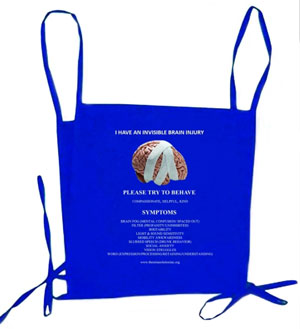 Leslee has also discovered her creative side and made a
golf caddy shirt, with information related to the “invisible” disability that is brain injury. She wears this
over her clothes and has noticed people reading it while waiting in line behind her and other places, as well.
She is helping spread the word on brain injury every day!
Leslee has also discovered her creative side and made a
golf caddy shirt, with information related to the “invisible” disability that is brain injury. She wears this
over her clothes and has noticed people reading it while waiting in line behind her and other places, as well.
She is helping spread the word on brain injury every day!
If you'd like one for yourself, you can go to There Is A Solution Inc., make a donation of $25, send her a message with your address, and she will send it out.
